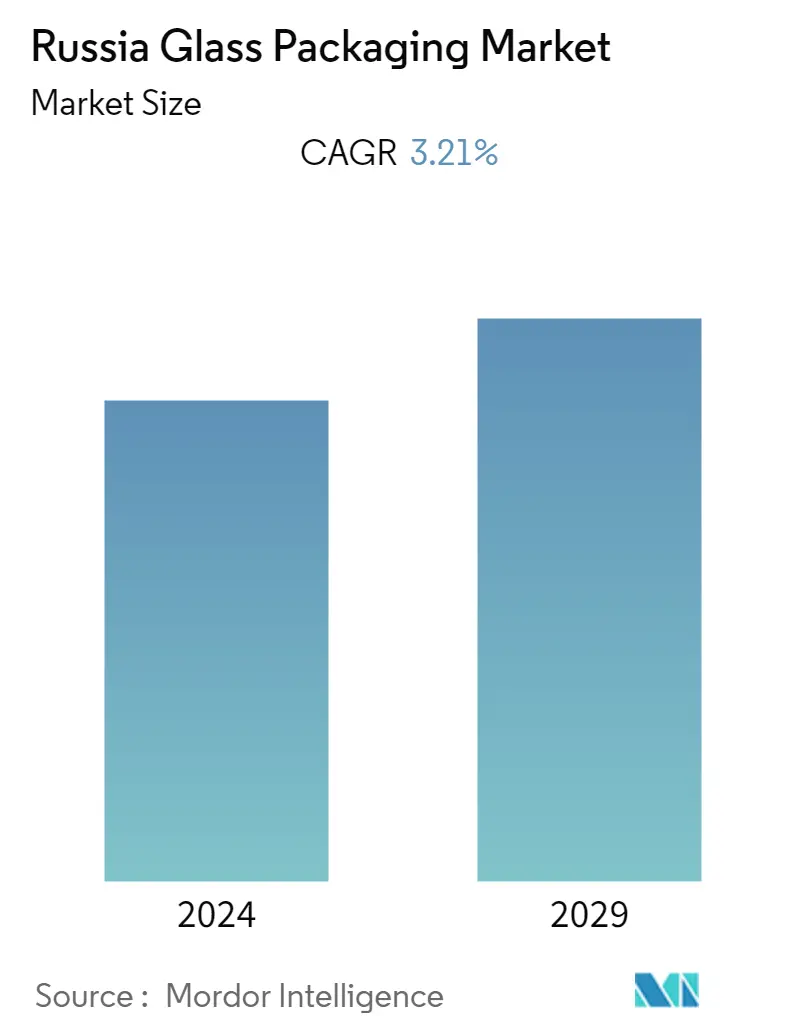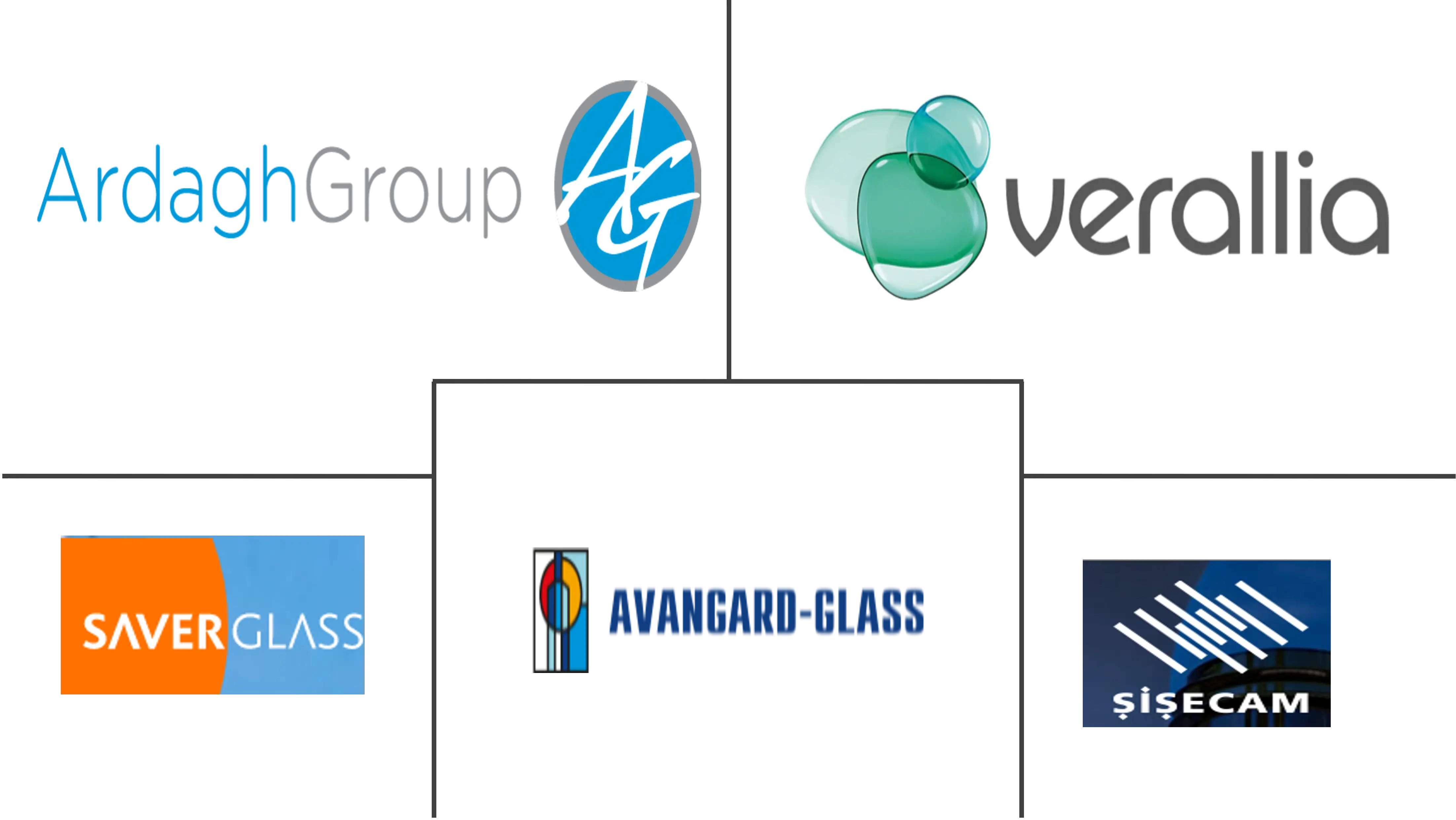Market Size of Russia Glass Packaging Industry

| Study Period | 2019 - 2029 |
| Base Year For Estimation | 2023 |
| Forecast Data Period | 2024 - 2029 |
| Historical Data Period | 2019 - 2022 |
| CAGR | 3.21 % |
| Market Concentration | Medium |
Major Players
*Disclaimer: Major Players sorted in no particular order |
Need a report that reflects how COVID-19 has impacted this market and its growth?
Russia Glass Packaging Market Analysis
The Russian glass packaging market is expected to register a CAGR of 3.21% during the forecast period. There is an impact of the Russia-Ukraine war on the overall packaging ecosystem. The Russian glass industry provides packaging products for customers for food and beverage, perfumery, cosmetics, and pharmacy. The region's new sustainability and recyclability rules are also prominent factors pushing the glass packaging growth. The European Union targets recycling 75% of the packaging waste by 2030 as part of the Circular Economy Package.
- The recovery trend of the Russian economy is providing several growth prospects for various industries, like food processing and other indigenous industries, subsequently fostering growth for the glass bottle and container industry. Additionally, importing food ban from several countries, coupled with the Russian government's import substitution policy, created a situation where the Russian food industry is expected to expand in a favorable competitive environment. It will also incentivize investment in modern technology for processing and packaging. Regarding players, Aktis is one of Russia's largest glass container factories.
- The capacity of Aktis is 1.4 billion units of glass containers per year. Also, Ruscam-Ufa operates a glass bottle plant in Ufa, the capital of the Republic of Bashkortostan, in central Russia. The company produces and supplies lightweight, disposable glass bottles to the alcoholic beverages and food industry. The facility includes three furnaces with a combined glass melt capacity of 360,000 MT annually.
- Further, taking advantage of the recent economic surge in Russia, significant players like Sidel have started opening offices in the country. According to Sidel, more than 700 pieces of packaging equipment have been installed in the region. The development of packaging needs in food, beverage, and personal care production drives this growth.
- The Russian alcoholic beverage industry witnessed the most substantial demand for glass bottles and containers. Russia is the fourth largest alcohol-consuming nation in the world. According to the statistics offered by the Analytical Center for the Government of the Russian Federation, beer was the most sold alcoholic beverage in Russia. With glass packaging being a primary packaging material for alcoholic drinks, the market for glass packaging can be expected to grow at a healthy rate in this region.
- The Russia and Ukraine war can impact market growth of the market. Due to the war Europe-Russia gas standoff threatened the future of the world's oldest glassware company. Even though Russians are internationally acknowledged for their preference for vodka, statistical data by VCIOM (Russian Public Opinion Research Center) reveals that it is not the most consumed alcoholic beverage in the country. With the increasing beer consumption, the demand for glass packaging caters to significant demand.
- According to the Russian government, waste at Russian landfills generally is composed of 34% food, 19% paper, 14% polymers, 12% glass, 6% wood, 6% street waste, 4% metal, 3% textile, and 2% other. The government policy includes increasing municipal waste processing from 10% in 2018 to 80% by 2030 and building 200 waste processing installations. Also, increasing the recycling of packaging and waste by producers to 10-30% is aimed.
- Amidst the pandemic resurgence, according to the World Bank, the effects of the pandemic have touched various spheres of the Russian economy. The unemployment rate increased to 6.3%, the highest in the last few years. Approximately half a million jobs have been lost in three large sectors: manufacturing, construction, and retail and hospitality services.
- Moreover, the Russia-Ukraine war increased the prices of several commodities, including fertilizers, food products, and oil and gas. The supply chain disruptions have increased freight charges, created container shortages, and lowered the warehousing space availability. Already imposed sanctions, such as the US banning all Russian oil and gas imports and the EU's plans to ban all coal imports, industries across the board could feel the long-term effects. The rise in energy prices is liable to stay elevated as Western Europe attempts to reduce its energy dependency on Russia.
